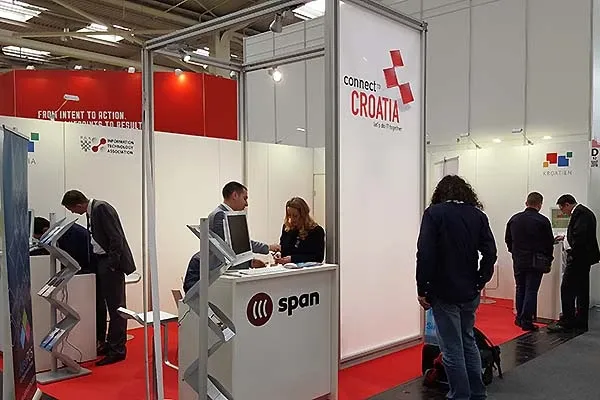Anthropic Signs New US Data Center Power Deal
Energy infrastructure company Hut 8 has entered into a partnership with Anthropic and Fluidstack to build a data center in the US.

Every spring, the show features a lineup of around 3,000 exhibitors and attracts some 200,000 visitors to its home base in Hannover, Germany on CeBIT the biggest business IT fair in the world, said Hartwig von Saas, press officer from CeBIT on the conference in Ljubljana. The next CeBIT will be staged from 20 to 24 March 2017, with Japan as its official Partner Country.
As a multifaceted exhibition/conference/networking event, CeBIT is a perennial must for everyone involved in the digital economy. The startup scene is also right at home at CeBIT and its dedicated SCALE 11 showcase, which sports more than 400 aspiring young enterprises.
The spotlight is on all the latest advances in fields such as artificial intelligence, autonomous systems, virtual and augmented reality, humanoid robots and drones. Thanks to a rich array of application scenarios, CeBIT makes digitalization tangible in the truest sense of the word. “d!conomy - no limits“, the chosen lead theme for 2017, underscore’s the show’s emphasis on revealing the wealth of opportunities arising from the digital transformation.
One of the biggest trends in IT is the merging of the real and digital worlds: so-called virtual and augmented reality applications (VR/AR) are already being embraced by a growing number of industry sectors, including manufacturing, logistics, healthcare and commerce. The upcoming CeBIT trade fair is dedicating a special section to this exciting area of technology, and establishing a new platform and meeting-place for VR/AR developers, suppliers and end users.
The range of possible applications for networked visualization solutions is virtually unlimited - whether in the servicing and maintenance of machinery, order picking in warehouses, the development and marketing of new products, the operating theatre or the school classroom. The business world is understandably excited about the commercial potential of this technology. In fact, analysts at the US consultancy Digi Capital are forecasting sales worth up to 120 billion US dollars by the year 2020.
The bottom line is that virtual and augmented reality have progressed way beyond their initial status as niche technologies in the computer gaming industry, and boast the potential - according to major industry players - to become the next big thing.
In the public perception the different technologies involved are frequently confused. In actual fact, there are very clear differences. For immersion into virtual reality, a so-called head-mounted display is used to register movements. The user is thus largely or totally shut off from his immediate surroundings. Augmented reality applications, on the other hand, are designed to enrich the real-world environment with digital objects or content. Data glasses are not strictly necessary for this: an AR app on a smartphone is adequate for simpler applications. Some exhibitors were already highlighting this mega-trend at this year’s CeBIT. But the greatest potential according to industry experts lies in so-called “mixed reality“ solutions, where physical and digital objects not only co-exist, but also interact. One example is the HoloLens from Microsoft, already launched in the USA and Canada, and soon to be marketed in Germany and other European countries.
The age of Industrie 4.0 and the Internet of Things presents enormous opportunities for VR and AR solutions. At the same time, buyers and decision-makers face significant challenges. Which applications are a good fit for the product or marketing portfolio of their own business, what do they cost, and what kind of changeover scenarios are likely to work best. CeBIT 2017 will provide answers to these and all the other questions that this new mega-trend - virtual visualization - inevitably raises.